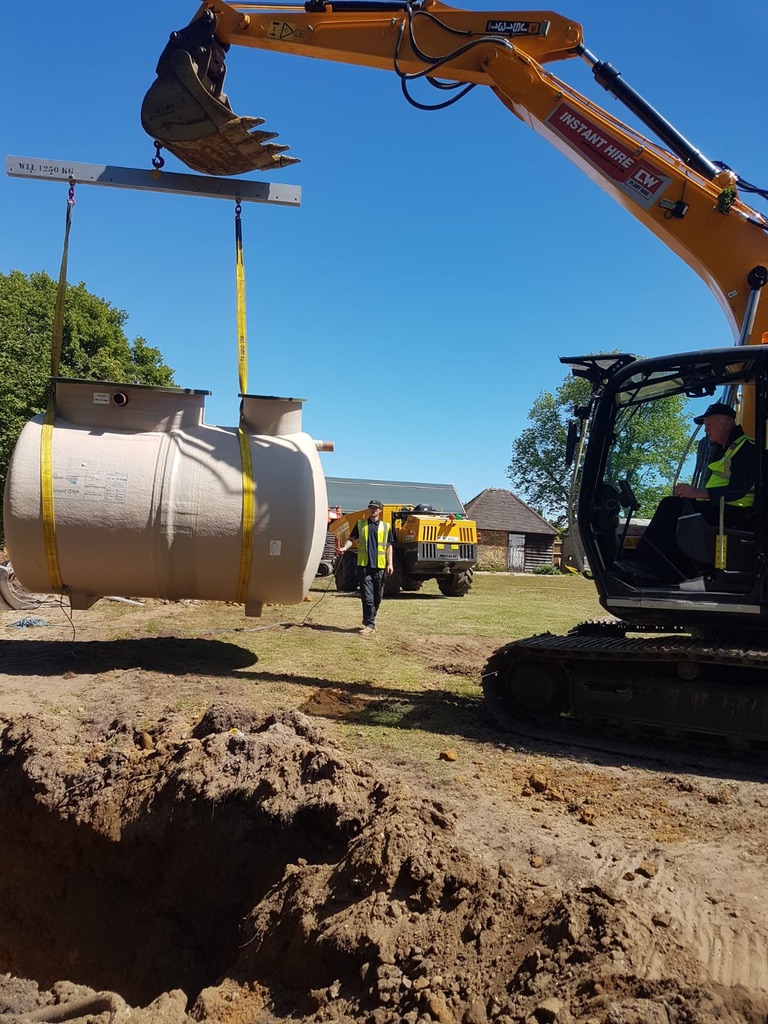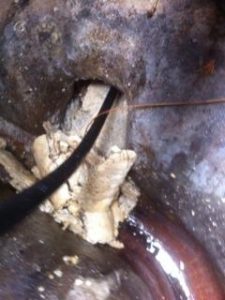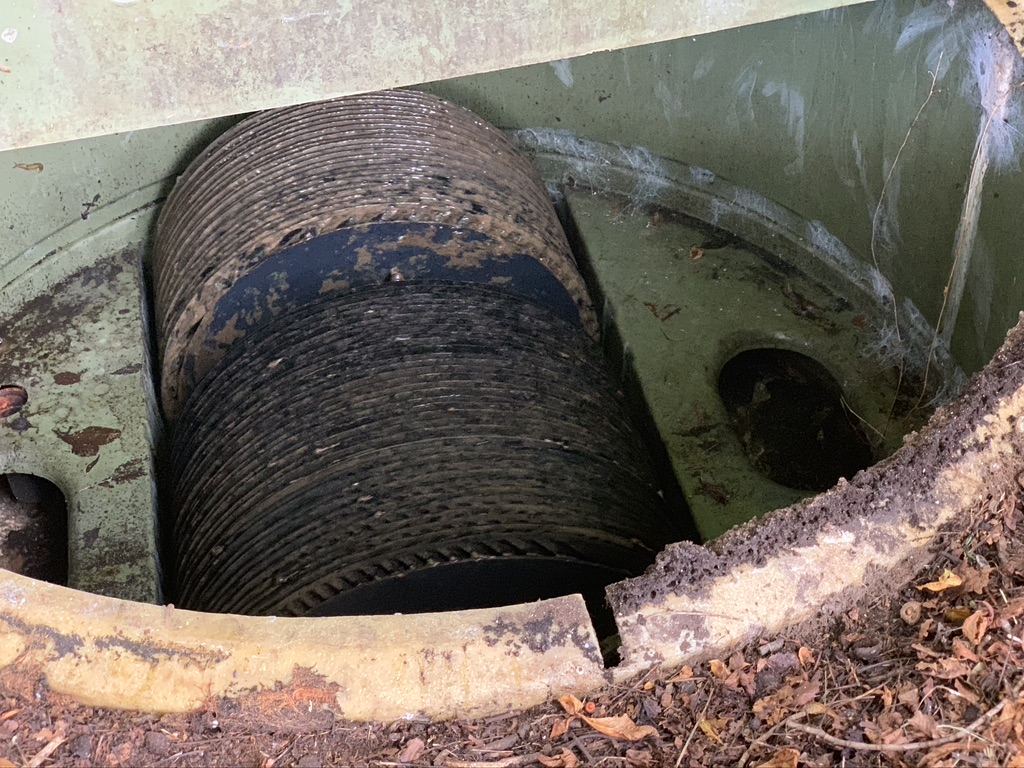Septic tank/treatment plant retention time

When you pump raw sewage to a treatment plant, certain processes take place.
Process; initial separation of solids from liquids
Retention time is; the time it takes for solids to separate from the wastewater and how much is retained in the holding tank. An Influx of raw materials which are not human waste can take a long time to settle. This results in a higher level of suspended solids in the septic tank or treatment plant.
In turn, this allows wastewater containing too many suspended food particles to discharge into the drainage field or soakaway system, causing pollution that goes black like oil in a drainage field. This will reduce the lifespan of the drainage field or soakaway, which will be exacerbated by high flow etc. You could be discharging polluted water to ditches, small streams or rivers without your knowledge.
It is imperative to retain or empty to allow space for separation. You can read more about this in our blog entitled ‘How to know when to empty your septic tank or treatment plant’.
Macerated Solids
On the whole, we normally avoid pumping raw sewage. [Just to be clear, the raw sewage at this location is not being pumped by ASL Limited from the house to the treatment plant.]
If raw sewage has to be pumped, we normally separate the solids from the wastewater and then pump the wastewater only. As a rule of thumb, we do not pump raw sewage unless the treatment plant receiving the effluent is doubled in size. It is more cost-effective and less problematic to separate the sewage from the water and pump water only to the treatment plant if the situation arises. It is more common to use gravity – a steady slow fall from the house to the Treatment Plant.
Sani flows used for low-lying basement conversions.
When you flush a toilet with a SANIFLO or WasteAway macerator pump attached, the waste first moves into the macerator unit. It is met there by a rotating cutting blade that moves at incredible speed to pound solid waste and material like toilet paper into a liquid.
The number of personnel using the toilet needs to be doubled when counting the population using the treatment plant or a septic tank.
Treatment Plants
These types of treatment plants commonly work by three significant processes; initial separation of solids from liquids, then bacteriological action, and thirdly into a final settlement chamber. The clean water is allowed to flow by gravity or pumped (after treatment) up to and into a drainage field, stream, river, or watercourse.
The first chamber in the treatment plant is essentially a holding tank for separation purposes. The effluent enters the initial holding tank, where initial separation of larger solids occurs, and the majority of unwelcome fats quickly float to the surface.
Because the first chamber receives waste straight from the drains (not pumped), the contents can get a little stirred up as new effluent enters, especially if it is a large volume all at one time. This is why the first chamber is limited to the initial separation of larger solids and unwelcome oils and fats. The first chamber is designed to trap most, if not all, fats that float to the top or sink to the bottom.

(We do not encourage fats and oils) You can read more about why in our blog entitled ‘Common causes of blocked drains and how we unblock them’.
This is why we insist that no material other than human waste is allowed to enter the tank. Greasy material from the kitchen should be trapped in a large enough grease trap that is fit for purpose, for later disposal by other means.
Effluent then passes to the treatment section after larger and smaller particles of solids in suspension have had the opportunity to settle to the base (sediment) or attach to the top (crust) of the first chamber.

The treatment compartment consists of a very large wheel that is a friendly environment for bacteria to eat the contents. This is evident on the actual wheel itself, with the first part of the wheel being more heavily coated with bacteria than the second half of the wheel. This indicates that the treatment plant is working and coping, although sometimes spasmodically. This is based on the appearance of the treatment area and in the final settlement chamber. We do not encounter this in other treatment plants which we service.
Pumped Sewage
Not to be too confused with macerators in kitchens. When kitchen macerators are used for macerating food, you can see and identify the produce. Emptying times are shortened on average by a month to accommodate, but obviously, that depends on usage.
An example of when pumping of sewage is required is when a treatment plant is situated too far away from the property or located up a hill or gradient. The sewage from the property would free-fall into a chamber, and then the combined sewage and liquid pumped from the chamber to the treatment plant. (The pump will break up the solids and macerate into smaller pieces, similar to pea soup.)
To cope with this pumped sewage, we normally have to double the size of the treatment plant to cope with what has been macerated. Again, to be clear, the treatment plant at this location has no pump before the treatment plant and certainly no need for a pump to get the sewage to the treatment plant. After the treatment plant, there is a pump, which pumps clean treated water up to the higher ground into the land drains. This has had no detrimental effect on the treatment process.
Processing
In general, the amount of food particles found in wastewater differs, i.e. the use of garbage disposal will produce more food particles, which will flush into the system.
Not all sewage or wastewater places the same load on the treatment plant process. Household chemicals or any chemicals in the wastewater can affect the solid accumulation in the holding tank.
The correct toilet paper to use in a private system is designed to dissolve. More substantial products such as kitchen roll, hand towels, wet wipes, sanitary wear, etc., are not suitable to be flushed into the treatment plant system.
A treatment plant is designed to work with domestic sewage only. Therefore, the presence of substances such as oil, fat, bleach, grease, and other household or industrial chemicals can cause severe issues with the treatment system.
Grease trap too small or inadequate
The floating scum layer of oil and grease which, if pushed through an inadequate grease/oil trap or fat trap and on through a treatment plant, breaching the separation system barriers, will eventually find its way into the drainage field or soakaway system. Not only does this cause pollution, but it will also clog that component of the treatment plant system.
Oil and grease are particularly harmful to the aerobic portion of a treatment plant or septic effluent ‘treatment’ in the soil absorption system.
Roof water or rainwater in a private system can be devastating to the process – please see our blog entitled ‘Surface water drainage what is it and how does it work.’
If you need to protect your sewage treatment plant or septic tank from delayed retention times due to grease, fat and oil get in touch with ASL Limited.

